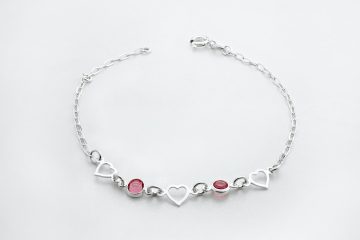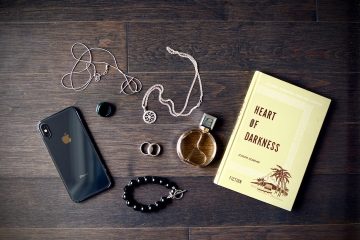Introduction
Have you ever wanted to create beautiful and intricate bracelets that showcase your creativity and style? Look no further than the art of Brazilian bracelet techniques. Brazilian bracelets, also known as friendship bracelets, are a popular form of handcrafting that involves knotting colorful threads together to create stunning and unique accessories. In this comprehensive guide, we will delve into the world of Brazilian bracelet techniques, from the basic knots to intricate patterns, helping you master this art form and create eye-catching bracelets that reflect your personal flair.
Table of Contents
1. Understanding Brazilian Bracelets
– The History and Significance of Brazilian Bracelets
– Materials and Tools Needed
– Choosing the Right Threads and Colors
2. Getting Started with Basic Knots
– The Forward Knot
– The Backward Knot
– Combining Knots for Different Effects
3. Exploring Different Patterns
– Chevron Pattern
– Diamond Pattern
– Stripe Pattern
4. Adding Beads and Charms
– Selecting the Right Beads and Charms
– Incorporating Beads into Your Bracelets
– Using Charms to Personalize Your Creations
5. Advanced Techniques
– The Alpha Pattern
– The Zigzag Pattern
– The Wave Pattern
6. Tips and Tricks for Perfecting Your Bracelets
– Maintaining Consistent Tension
– Securing and Finishing Your Bracelets
– Adding Clasps and Closures
7. Exploring Creative Variations
– Double-Wrap Bracelets
– Braided Brazilian Bracelets
– Embellished Brazilian Bracelets
8. Troubleshooting Common Issues
– Untangling Knots
– Fixing Mistakes
– Dealing with Frayed Threads
9. Taking Your Skills to the Next Level
– Experimenting with Different Materials
– Incorporating Advanced Elements
– Creating Custom Designs
10. Conclusion
11. FAQs
1. Understanding Brazilian Bracelets
The History and Significance of Brazilian Bracelets
Brazilian bracelets have a rich cultural history rooted in the country’s indigenous tribes. The art of knotting colorful threads to create bracelets emerged as a symbol of friendship and protection. These bracelets were traditionally exchanged as gifts between friends to showcase their loyalty and bond. Over time, this art form gained popularity worldwide and has become a beloved craft for people of all ages.
Materials and Tools Needed
To get started with Brazilian bracelet techniques, gather the necessary materials and tools. The basic supplies include embroidery floss or cotton threads of various colors, a pair of scissors, and a clipboard or safety pin to secure your work. Embroidery floss, commonly used for these bracelets, is available in a wide range of vibrant colors, allowing you to create eye-catching designs. Additionally, consider using a bead mat or a piece of felt to keep your beads and charms from rolling away.
Choosing the Right Threads and Colors
When selecting threads for your Brazilian bracelets, consider the thickness and texture. Embroidery floss is commonly used due to its versatility and availability. It’s essential to choose threads that are strong and durable to ensure your bracelets withstand regular wear. Experiment with different color combinations to create visually appealing patterns. Consider the recipient’s preferences or the occasion the bracelet is intended for when choosing colors. Vibrant and contrasting colors often create stunning bracelets that catch the eye.
2. Getting Started with Basic Knots
The Forward Knot
The forward knot is one of the fundamental techniques used in Brazilian bracelet making. To create a forward knot, follow these simple steps:
1. Select two threads of different colors.
2. Take the left thread and place it over the right thread, forming a loop.
3. Pass the left thread under the right thread, then through the loop.
4. Pull both threads to tighten the knot.
The forward knot is commonly used to create diagonal patterns and add texture to your bracelets.
The Backward Knot
Similar to the forward knot, the backward knot is another essential technique. Follow these steps to create a backward knot:
1. Choose two threads of different colors.
2. Take the left thread and place it under the right thread, forming a loop.
3. Pass the left thread over the right thread, then through the loop.
4. Pull both threads to tighten the knot.
The backward knot is often used to create straight lines, borders, and lettering within your bracelet designs.
Combining Knots for Different Effects
By combining forward and backward knots, you can achieve various effects and patterns in your Brazilian bracelets. Experiment with different knot combinations to create unique designs. For example, alternating forward and backward knots can create a zigzag pattern, while repeating the same knot in a row produces a striped effect. Mastery of these basic knotting techniques is crucial to building a strong foundation for more intricate patterns.
3. Exploring Different Patterns
Chevron Pattern
The chevron pattern is a classic design that consists of inverted “V” shapes. To create a chevron pattern:
1. Arrange your threads side by side in the desired order.
2. Take the leftmost thread and create forward knots over the other threads until it reaches the rightmost position.
3. Repeat this process, starting with the rightmost thread and working back to the left.
By repeating these steps, you can create a beautiful chevron pattern that adds visual interest to your bracelets.
Diamond Pattern
The diamond pattern is another popular design that creates a series of diamond-shaped motifs. To create a diamond pattern:
1. Arrange your threads side by side in the desired order.
2. Take the leftmost thread and create a forward knot over the next two threads.
3. Move the leftmost thread to the right by one position.
4. Repeat the forward knot process until the leftmost thread returns to its original position.
5. Repeat the same steps, starting from the rightmost thread and working back to the left.
The diamond pattern adds an elegant touch to your bracelets and allows for endless color variations.
Stripe Pattern
The stripe pattern is a simple but effective design that features solid bands of color. To create a stripe pattern:
1. Choose two or more threads of different colors.
2. Take the leftmost thread and create forward knots over the other threads until it reaches the rightmost position.
3. Repeat this process, starting with the rightmost thread and working back to the left.
The stripe pattern is versatile and allows you to play with different color combinations, creating visually striking bracelets.
4. Adding Beads and Charms
Selecting the Right Beads and Charms
Incorporating beads and charms into your Brazilian bracelets can elevate their visual appeal. When selecting beads, consider their size, shape, and material. Beads made of glass, metal, or natural materials like wood or gemstones offer a wide range of options. Similarly, charms come in various shapes and themes, allowing you to personalize your bracelets according to your interests or the recipient’s preferences.
Incorporating Beads into Your Bracelets
To add beads to your bracelets, follow these steps:
1. Slide a bead onto one or more threads before starting your knotting pattern.
2. Create your desired knot over the bead, securing it in place.
3. Continue your knotting pattern, incorporating more beads as desired.
Beads can be placed at regular intervals or randomly throughout the bracelet, adding texture and visual interest.
Using Charms to Personalize Your Creations
Charms can be added to your bracelets to reflect your personality or commemorate special occasions. To attach charms:
1. Choose the desired location for your charm within the bracelet.
2. Slide the charm onto one or more threads.
3. Create your knotting pattern, ensuring the charm is securely in place.
Charms can be positioned as a centerpiece or evenly spaced along the bracelet, allowing you to create unique and meaningful designs.
5. Advanced Techniques
The Alpha Pattern
The alpha pattern allows you to incorporate letters and words into your Brazilian bracelets. To create an alpha pattern:
1. Choose a font or design for your desired letter(s).
2. Assign each letter a corresponding thread color.
3. Follow the chosen font or design, knotting the threads accordingly.
The alpha pattern adds a personal touch to your bracelets, making them perfect for gifts or expressing your creativity.
The Zigzag Pattern
The zigzag pattern introduces a dynamic and eye-catching element to your Brazilian bracelets. To create a zigzag pattern:
1. Arrange your threads side by side in the desired order.
2. Take the leftmost thread and create a forward knot over the next two threads.
3. Move the leftmost thread to the right by one position.
4. Repeat the forward knot process until the leftmost thread reaches the rightmost position.
5. Reverse the process, starting from the rightmost thread and working back to the left.
The zigzag pattern creates a visually striking effect and allows for endless color combinations.
The Wave Pattern
The wave pattern mimics gentle, flowing waves and adds a touch of elegance to your bracelets. To create a wave pattern:
1. Arrange your threads side by side in the desired order.
2. Take the leftmost thread and create a forward knot over the next thread.
3. Move the leftmost thread to the right by two positions.
4. Repeat the forward knot process until the leftmost thread reaches the rightmost position.
5. Reverse the process, starting from the rightmost thread and working back to the left.
The wave pattern is versatile and can be combined with other techniques to create intricate designs.
6. Tips and Tricks for Perfecting Your Bracelets
Maintaining Consistent Tension
Consistency in tension is crucial for creating neat and professional-looking Brazilian bracelets. Here are some tips to help you maintain consistent tension:
– Avoid pulling the threads too tightly or leaving them too loose.
– Use the same amount of force for each knot.
– Regularly check the tension throughout your bracelet-making process.
By practicing and paying attention to your tension, you will achieve beautifully crafted bracelets.
Securing and Finishing Your Bracelets
To secure and finish your bracelets, follow these steps:
1. Leave a tail of approximately 2-3 inches at the starting point.
2. Once you have completed your desired pattern, tie a knot at the end.
3. Trim any excess thread, leaving a small tail.
Depending on your preference, you can either tie the bracelet directly onto your wrist or add clasps and closures for easy wearing.
Adding Clasps and Closures
Adding clasps and closures to your Brazilian bracelets provides convenience and versatility. Here’s how you can incorporate them:
1. Measure your wrist or the recipient’s wrist to determine the appropriate bracelet length.
2. Attach the chosen clasp or closure to one end of the bracelet.
3. Create a loop or use jump rings to secure the other end to the clasp or closure.
Clasps and closures enable easy wearing and removal of your bracelets, allowing you to showcase your creations effortlessly.
7. Exploring Creative Variations
Double-Wrap Bracelets
Double-wrap bracelets add an extra layer of style and intricacy to your designs. Instead of creating a single-strand bracelet, you will create a longer piece that wraps around the wrist twice. The process remains the same; however, you will need to adjust the length of the threads accordingly.
Braided Brazilian Bracelets
Braided Brazilian bracelets offer a unique twist on the traditional knotting techniques. To create a braided bracelet:
1. Divide your threads into three equal sections.
2. Braid the threads using the traditional three-strand braiding technique.
3. Secure the ends with a knot, clasp, or closure.
Braided bracelets create a textured and visually appealing look that sets them apart from the standard knotting style.
Embellished Brazilian Bracelets
Embellishing your Brazilian bracelets with additional elements can elevate their appearance. Consider incorporating small beads, sequins, or embroidery stitches into your designs. These embellishments can be added directly onto the threads or attached separately using jump rings or thread.
8. Troubleshooting Common Issues
Untangling Knots
Occasionally, knots may become tangled or knotted unintentionally. To untangle knots:
1. Gently separate the threads, identifying the tangled sections.
2. Slowly work through the tangle, taking care not to pull too forcefully.
3. Use a pair of small scissors or a needle to carefully loosen tight knots if necessary.
Taking your time and being patient will help you untangle knots without damaging your bracelet.
Fixing Mistakes
Mistakes happen, even to the most experienced bracelet makers. If you make a mistake in your pattern, don’t worry. Follow these steps to fix it:
1. Identify the mistake and determine which threads are involved.
2. Carefully undo the incorrect knots, working backward until you reach the mistake.
3. Correct the mistake by re-knotting the threads correctly.
Remember, mistakes are an opportunity to learn and improve your skills. Embrace them as part of the creative process.
Dealing with Frayed Threads
Over time, threads may fray or become worn, especially with regular use. To deal with frayed threads:
1. Trim any frayed ends with a sharp pair of scissors.
2. Use a small amount of clear nail polish or fabric glue to seal the ends and prevent further fraying.
Taking care of frayed threads will ensure the longevity of your bracelets and keep them looking their best.
9. Taking Your Skills to the Next Level
Experimenting with Different Materials
While embroidery floss is the traditional choice for Brazilian bracelets, don’t be afraid to experiment with different materials. Consider using leather cords, hemp, or even yarn to create unique and unconventional designs. Different materials offer different textures and visual effects, allowing you to expand your creative possibilities.
Incorporating Advanced Elements
Once you have mastered the basic techniques, you can incorporate more advanced elements into your bracelets. Try integrating macramé knots, different bead placements, or combining multiple patterns to create intricate designs. Pushing your boundaries and exploring new techniques will help you refine your skills and create truly exceptional bracelets.
Creating Custom Designs
As you become more proficient in Brazilian bracelet techniques, venture into designing your own patterns. Take inspiration from nature, art, or your favorite motifs. Sketch out your ideas on paper and experiment with different thread combinations and knot variations. Designing custom bracelets not only showcases your creativity but also allows you to make one-of-a-kind pieces that reflect your unique style.
10. Conclusion
Mastering the art of Brazilian bracelet techniques opens up a world of creativity and self-expression. From basic knots to advanced patterns, the possibilities are endless. With this comprehensive guide, you have learned the fundamentals of Brazilian bracelet making, explored various techniques and patterns, and discovered tips and tricks to perfect your creations. Now it’s time to unleash your creativity, experiment with different materials, and create stunning bracelets that reflect your personal style. Enjoy the journey and happy bracelet making!
FAQs
1. How long does it take to master Brazilian bracelet techniques?
The time it takes to master Brazilian bracelet techniques varies from person to person. With practice and dedication, you can become proficient in the basic knots within a few hours. However, mastering complex patterns and advanced techniques may take weeks or even months. Embrace the learning process, start with simple designs, and gradually progress to more intricate patterns.
2. Can I use different thread thicknesses for Brazilian bracelets?
Yes, you can experiment with different thread thicknesses to achieve different effects. Thicker threads create a bolder and more substantial bracelet, while thinner threads result in a delicate and dainty look. Be mindful that the choice of thread thickness may impact the complexity of your patterns and the time required to complete each bracelet.
3. Can I combine different Brazilian bracelet patterns in a single design?
Absolutely! Combining different patterns is an excellent way to create unique and visually captivating bracelets. Experiment with mixing chevron, diamond, and stripe patterns, or even introduce your own variations. Let your imagination run wild and create bracelets that truly stand out.
4. Are Brazilian bracelets suitable for beginners?
Yes, Brazilian bracelets are an excellent choice for beginners. The basic knotting techniques are easy to learn, and there are countless resources, tutorials, and patterns available to help you get started. Begin with simple designs and gradually progress to more complex patterns as your skills improve.
5. Can I sell the Brazilian bracelets I make?
Certainly! Brazilian bracelets make wonderful handmade gifts, but they can also be sold as unique creations. If you decide to sell your bracelets, consider setting up an online shop or participating in local craft fairs or markets. Remember to price your bracelets fairly, taking into account the time, effort, and materials invested in each piece.




